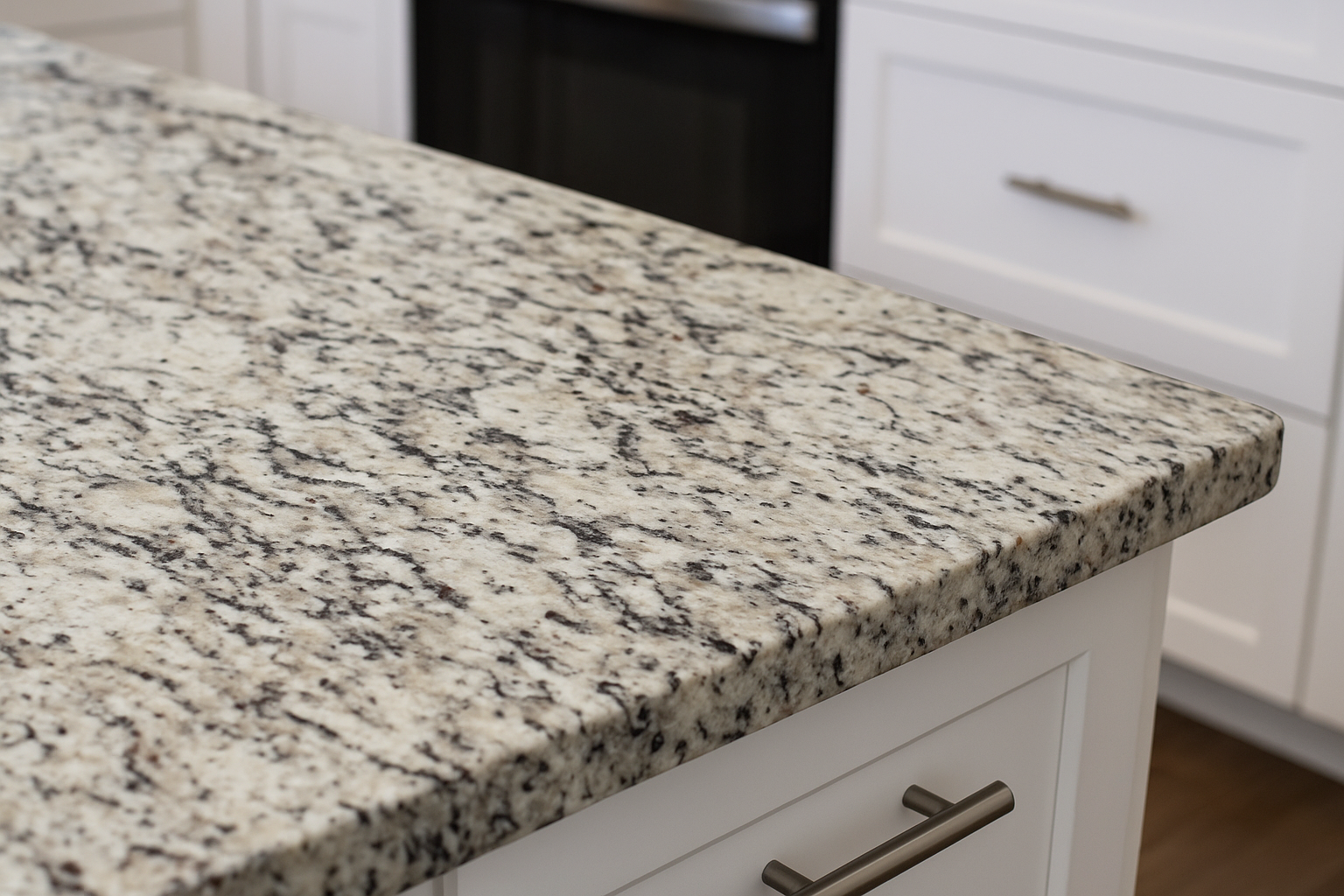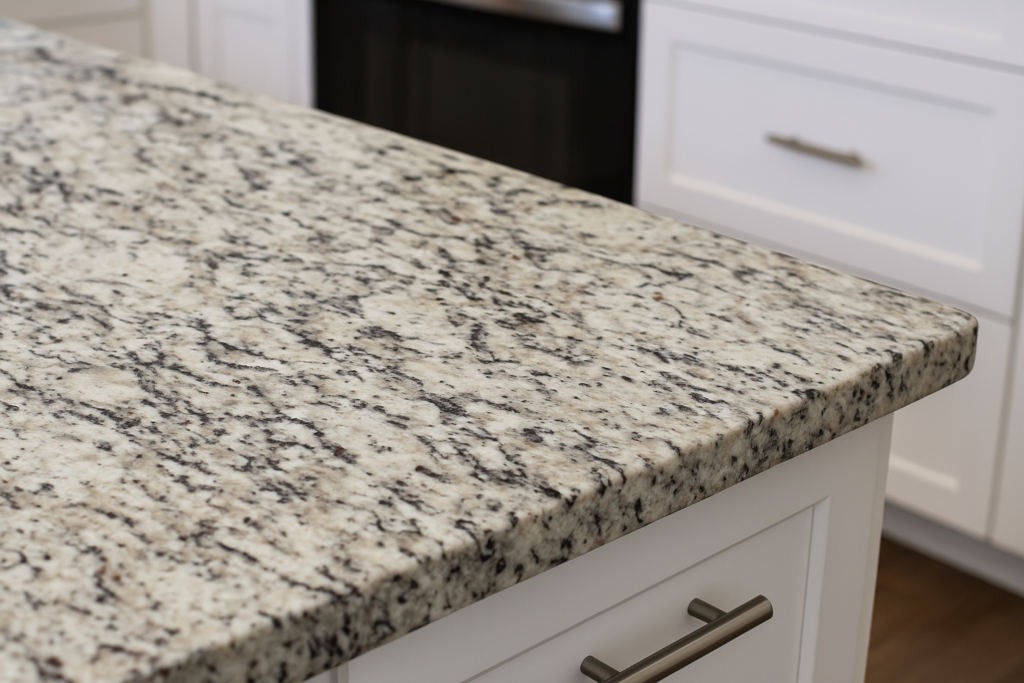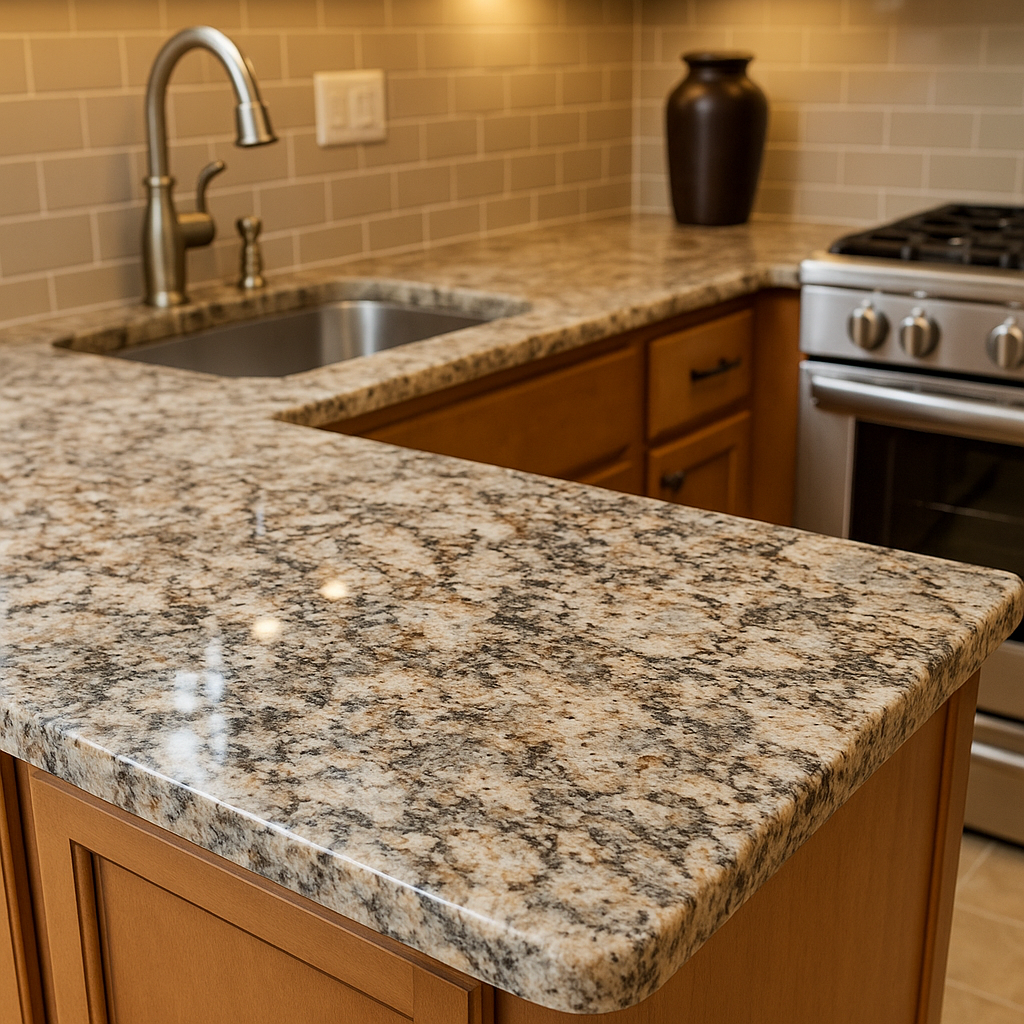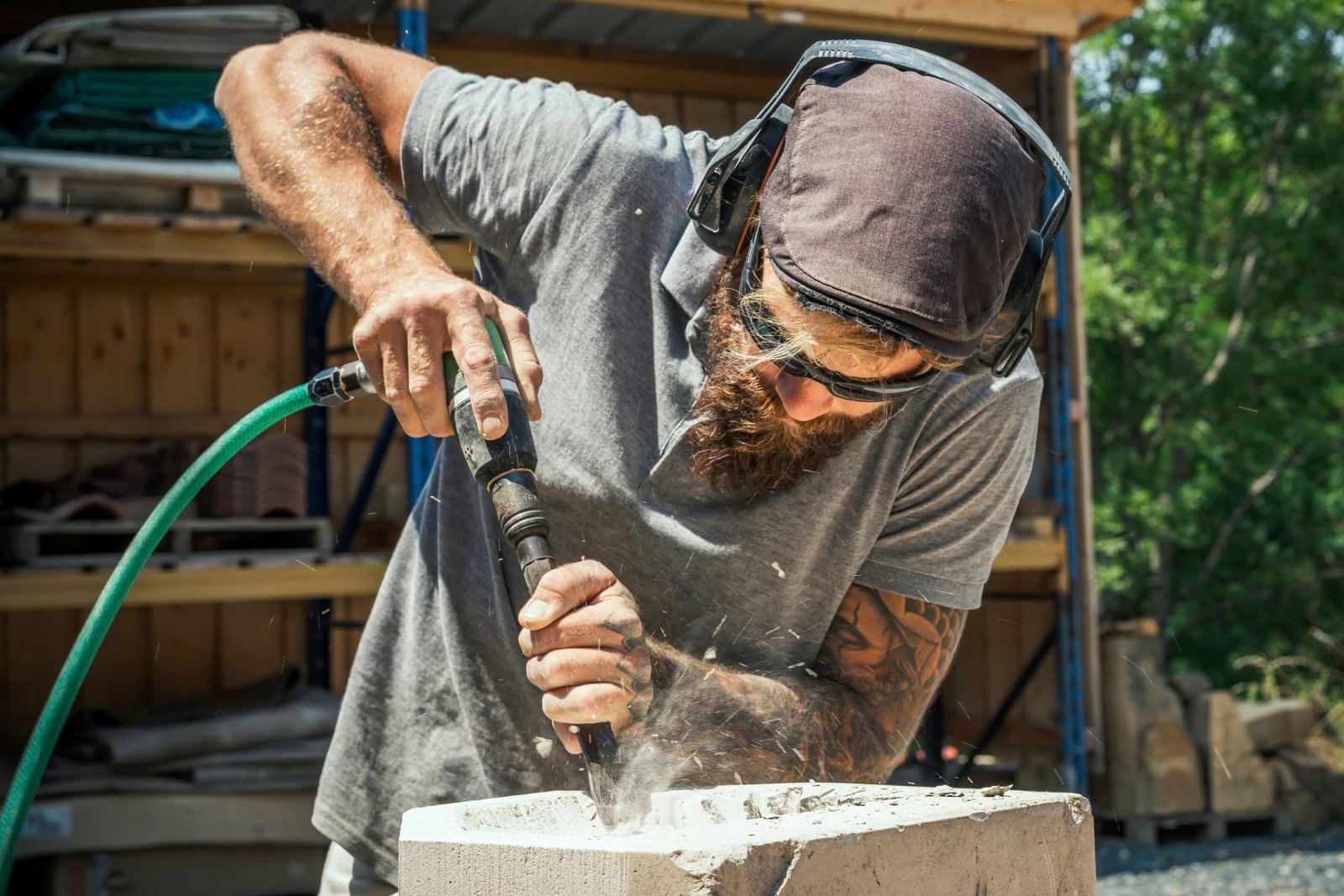
A granite countertop is more than just a functional surface—it’s a design feature that can define the look and feel of an entire kitchen, bathroom
A granite countertop is more than just a functional surface—it’s a design feature that can define the look and feel of an entire kitchen, bathroom, or outdoor area. With endless variations in color, texture, and veining, granite brings a level of natural beauty that no man-made material can replicate.
But for homeowners and designers unfamiliar with granite, the question often arises: What does a granite countertop actually look like? In this in-depth guide, we’ll explore the appearance of granite countertops, including their colors, patterns, and surface finishes—along with design tips and ideas for every room in your home.

What Is a Granite Countertop?
A granite countertop is made from natural stone, extracted from quarries around the world. Once cut into slabs, granite is polished and fabricated into durable, heat- and scratch-resistant surfaces for kitchens, bathrooms, patios, and more.
Each slab of granite is unique due to its mineral composition—typically a mix of quartz, feldspar, and mica—which creates beautiful variations in pattern and color.

👉 What Is a Granite Countertop?
What Granite Countertops Look Like: A Breakdown
1. Natural Patterns and Veining
Unlike engineered surfaces like quartz or laminate, no two granite slabs are identical. Granite countertops feature swirling veins, speckled grains, or marbled movements created by mineral deposits over millions of years.
Common Visual Patterns:
- Speckled – Dense patterns of small mineral grains (e.g., Ubatuba, Tan Brown)
- Marbled/Veined – Flowing veins similar to marble (e.g., Alaska White, River White)
- Flecked or Dotted – Tiny reflective minerals like mica give a sparkling effect (e.g., Black Galaxy)
These natural designs add depth, texture, and character to any room.
2. Granite Countertop Colors
Granite comes in an extensive array of hues—from classic neutrals to bold, exotic shades. Your choice of color can impact the overall vibe of your kitchen countertop or vanity area.
Popular Color Families:
- White Granite
Clean and modern. Often features gray veining or specks. Pairs well with dark cabinetry.- Examples: White Ice, Moon White
- Black Granite
Elegant and dramatic. Some black granites feature gold or silver flecks.- Examples: Absolute Black, Black Galaxy
- Gray Granite
Neutral and versatile. Complements industrial, contemporary, or rustic designs.- Examples: Steel Gray, Silver Cloud
- Beige and Brown Granite
Warm and earthy. Ideal for traditional kitchens.- Examples: Giallo Ornamental, Santa Cecilia
- Blue or Green Granite
Exotic and eye-catching. Often used in upscale kitchens and luxury bathrooms.- Examples: Blue Bahia, Verde Butterfly
For insight into how granite gets its colors, see:
👉 What Is Granite Countertop Made Of?
3. Surface Finishes
The final look of a granite slab also depends on its finish. This affects not just appearance but also texture and light reflection.
Types of Granite Finishes:
- Polished – High-gloss, mirror-like shine. Enhances color depth.
- Honed – Matte or satin finish. Soft and understated, great for modern bathrooms.
- Leathered – Textured finish that highlights the natural grain. Adds a rustic touch.
Each finish offers different levels of granite countertop maintenance and slip resistance, depending on the application.
4. Edge Profiles
Edge profiles shape the outer perimeter of your countertop and contribute to its overall granite countertop design.
Popular Edge Styles:
- Eased – Slightly rounded. Clean and modern.
- Bullnose – Fully rounded. Family-friendly and classic.
- Ogee – Elegant, double-curve edge. Often used in upscale kitchens.
- Chiseled – Rough, natural edge. Great for rustic or outdoor spaces.
Edge details are also key during countertop installation to ensure both safety and aesthetics.
Where Do Granite Countertops Look Best?
While granite is most commonly used in kitchens, its aesthetic flexibility allows it to shine in various settings.
In the Kitchen:
- Pair white granite with navy or charcoal cabinets for contrast.
- Use black granite on islands with lighter perimeter countertops for a two-tone effect.
- Choose granite with large veining for waterfall edges and backsplashes.
In the Bathroom:
- Gray or beige granite complements porcelain and natural stone tile.
- A honed finish gives vanities a spa-like softness.
- Add granite as a tub deck, wall trim, or ledge.
On the Patio:
- Choose leathered or honed finishes for better grip and outdoor durability.
- Dark granite colors hide outdoor grime.
- Match granite with stone pavers, brick, or wood elements.
For design ideas beyond the kitchen, visit:
👉 When Should You Consider Using a Granite Countertop in a Bathroom or Patio Area?
Granite vs. Other Materials: A Visual Comparison
| Feature | Granite | Quartz | Marble | Laminate |
|---|---|---|---|---|
| Visual Variation | ✅ Natural and unique | ❌ Repetitive patterns | ✅ Elegant but softer | ❌ Printed design |
| Color Range | ✅ Extensive | ✅ Extensive | ⚠️ Limited whites | ✅ Wide range |
| Finish Options | ✅ Polished, honed, leathered | ✅ Polished mostly | ✅ Polished or honed | ❌ Glossy/matte only |
| Edge Design Flexibility | ✅ High | ✅ High | ✅ Moderate | ❌ Limited |
Granite Countertop Design Tips
- Use lighting to highlight granite’s texture and veining.
- Match cabinet hardware to flecks in the granite (gold, silver, bronze).
- Choose backsplash tiles that complement, not compete with, bold granite patterns.
- Balance bold granite with neutral cabinets and flooring.
Granite Countertop Prices and Value
Granite’s visual appeal is matched by its long-term value. While initial granite countertop prices range from $40–$150 per square foot installed, the durability and visual impact justify the cost.
Plus, granite increases home resale value, making it a smart design investment.
Maintenance: Preserving the Look of Granite
To keep your granite looking its best:
- Wipe daily with a pH-neutral cleaner
- Seal annually to prevent staining
- Avoid harsh chemicals or abrasives
- Clean up spills immediately, especially wine, oil, or citrus
Proper granite countertop cleaning preserves color vibrancy and prevents unnecessary granite countertop repair.
Final Thoughts
So, what does a granite countertop look like? The answer is: uniquely beautiful. With its vast variety of colors, patterns, textures, and finishes, granite offers limitless design possibilities. Whether you want a dramatic focal point or a soft, natural surface, granite delivers unmatched aesthetic depth and enduring quality.
Each granite countertop is a one-of-a-kind masterpiece—designed by nature, refined by craftsmanship, and chosen by you to bring beauty and function to your home.

